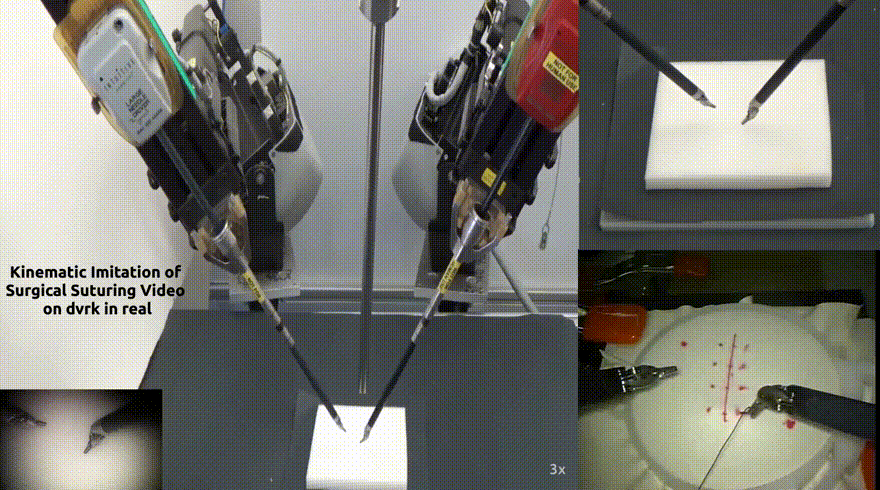
In a collaboration between Google Brain, Intel Corporation and the University of California, Berkeley, researchers have ‘trained’ robots to mimic surgical procedures through the use of instructional videos.
UC Berkeley professors have previously used YouTube videos as a guide for robots to learn various motions such as jumping or dancing, while Google has trained robots to understand depth and motion. The team applied that knowledge to their latest project, Motion2Vec, in which videos of actual surgical procedures are used for instruction. In a recently released research paper, researchers outline how they used YouTube videos to train a two-armed da Vinci robot to insert needles and perform sutures on a cloth device.
The medical team relied on Siamese networks, a deep-learning setup that incorporates two or more networks sharing the same data. The system is optimal for comparing and assessing relationships between datasets. Such networks have been used in the past for facial detection, signature verification and language detection.
Ken Goldberg, a physician who heads the UC Berkeley laboratory, explains YouTube is a rich source of instructional materials for this deep-learning project.
“YouTube gets 500 hours of new material every minute. It’s an incredible repository,” he said. “Any human can watch almost any one of those videos and make sense of it, but a robot currently cannot—they just see it as a stream of pixels. So the goal of this work is to try and make sense of those pixels. That is to look at the video, analyze it, and… be able to segment the videos into meaningful sequences.”
For the suture task, the team needed only 78 instructional medical videos to train its AI engine to perform the procedure. They claim a success rate of 85 percent.
This means that robots can eventually undertake some of the more basic, repetitive tasks in surgical procedures and allow surgeons to focus their time and energy on the more exacting steps.
Will robots replace surgeons soon?
“We’re not there yet,” Goldberg said. “But what we’re moving towards is the ability for a surgeon, who would be watching the system, to indicate where they want a row of sutures, convey that they want six overhand sutures,” Goldberg said. “Then the robot would essentially start doing that and the surgeon would… be able to relax a little bit so that they could then be more rested and able to focus on more complex or nuanced parts of the surgery.”
Machine learning has contributed much to biotechnology indecent years. The ability of AI to rapidly process huge volumes of data has yielded progress in detecting lung cancer and stroke risk based on CAT scans, calculated risk of heart disease and cardiac arrest based on EKG and MRI imagery, classified skin lesions from photos and detected signs of diabetic distress in eye images. And here in the middle of a pandemic, AI is helping scientists find drugs that may curb the spread of COVID-19 and eventually find a cure and a vaccine.
https://techxplore.com/news/2020-06-intel-google-uc-berekely-ai.html







Recent Comments